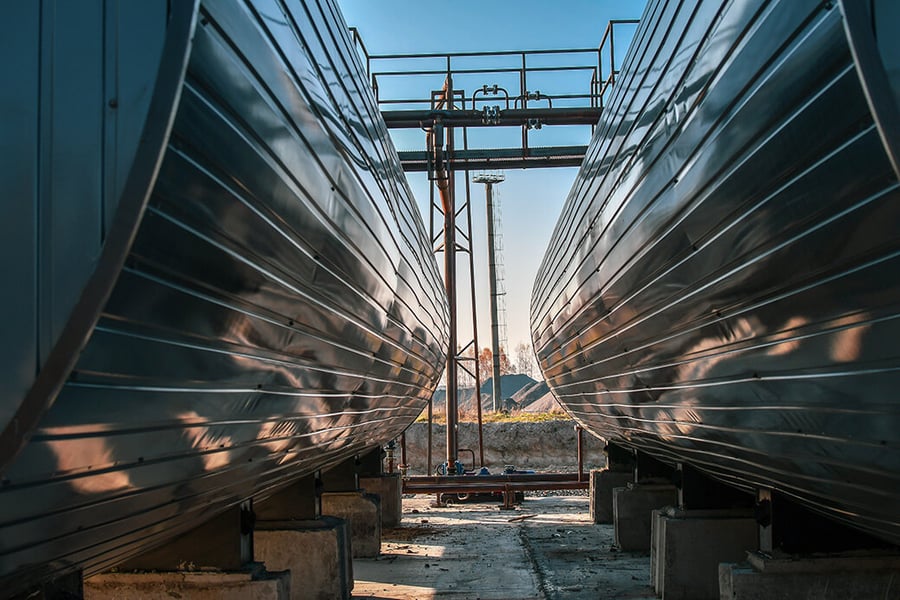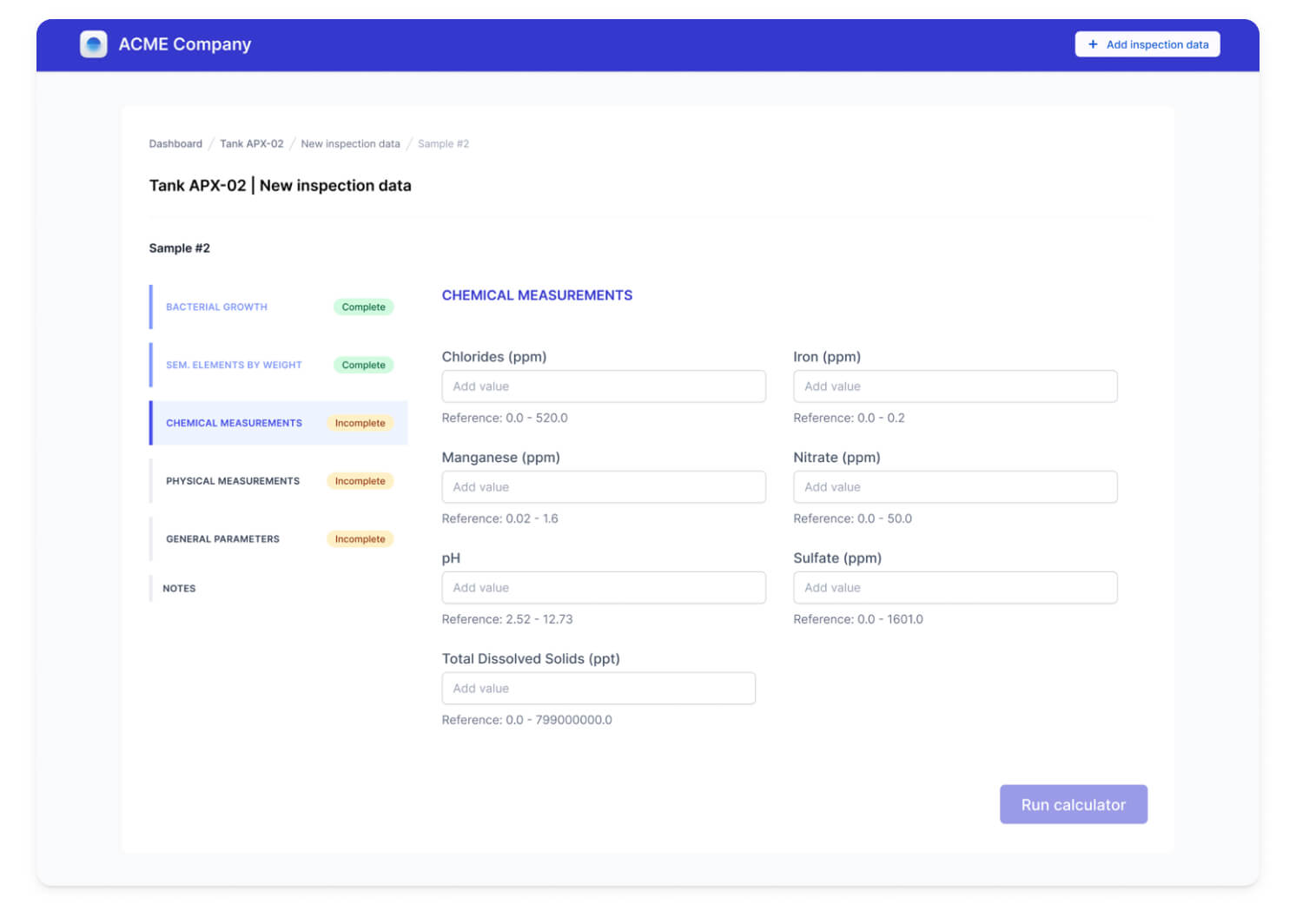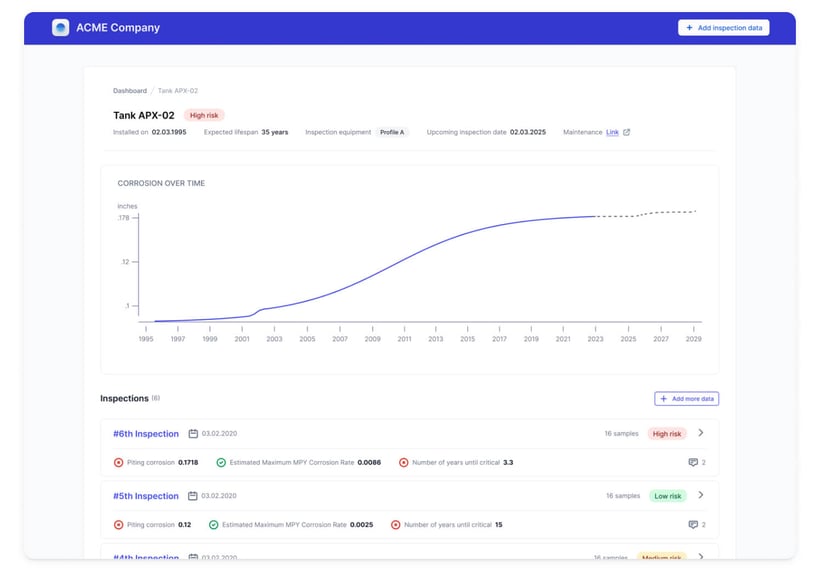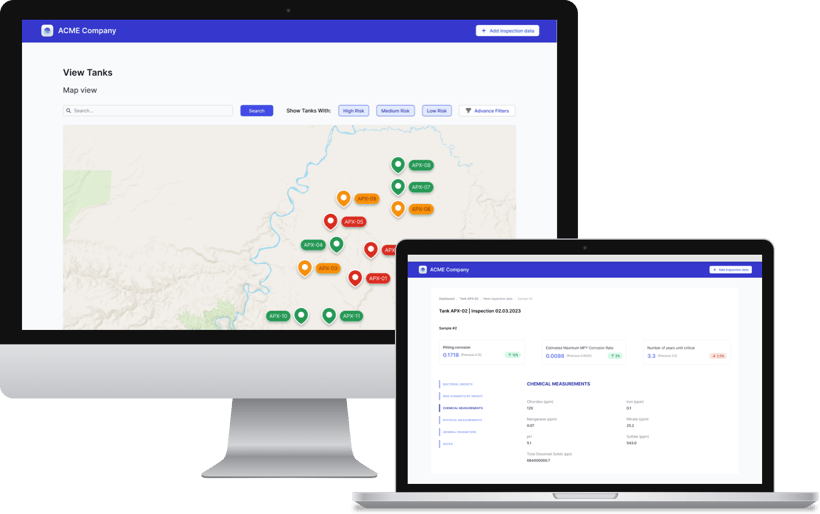Case Studies
AI-powered tool saves energy company millions
We developed a corrosion prediction tool utilizing machine learning that helps save our client, a Canadian energy transportation and distribution company, millions of dollars annually by reducing maintenance costs and minimizing tank losses.
The client
Our client, a Canadian energy transportation and distribution company, operates oil and natural gas pipelines and renewable energy and electricity transmission assets. Because they work with oil and natural gas, storing and moving the liquids is a significant part of the business. Achieving the greatest longevity possible from Aboveground Storage Tanks was critical to improving the return on investment for each tank.
The challenge
- Aboveground Storage Tanks (AST) are large containers usually made of metal and resting on top of the ground, designed to store different liquid or gas substances temporarily.
- The cost of a tank starts at $100,000 and can increase to $500,000 or more, depending on volume, type, materials used for construction, location of installation, and other parameters.
- A tank's lifespan can extend to 40 years, heavily dependent upon the amount of corrosion from the product stored, various environmental conditions, and maintenance performed to extend the tank's lifespan.
- The challenge is predicting corrosion rates to provide the maintenance needed to extend each tank's lifespan - saving money and increasing return on investment.
- Maintenance, such as inspections, repairs, and painting, is generally performed on a set schedule. Tank inspection can take 3-4 days, and during that time, materials stored in the tank must be moved and stored elsewhere.
- Each day a tank is inspected can cost about $1M - depending on what is stored. Therefore, predicting corrosion rates and informing whether scheduled maintenance should be performed or pushed out could help reduce costs. Yet, it was not clear what specific combination of factors led to significant corrosion. The client needed a partner to come in and help extract insights from rich amounts of data.
Our approach
We collaborated with the client's operations and maintenance teams to develop and deploy a data-driven corrosion prediction tool designed to analyze as much relevant information as possible to predict corrosion rates. First, we analyzed existing data sources, including inspection forms, maintenance records, environmental data, lab results, engineering drawings, and industry standards. As a second step, we identified the most important parameters from the data that may be relevant to the corrosion rate. After selecting the most relevant set of such parameters, we designed multiple machine learning models that evaluated combinations of various factors to see how well they predicted corrosion rates. Through extensive testing and analysis, we were able to determine a variety of factors that lead to significant corrosion and which the client can now mitigate with much higher confidence and focus.
To support corrosion management for the operations and maintenance teams, we created a web application to calculate the predicted lifespan of a tank based on a variety of data inputs. Modeling and prediction improvement is an ongoing process the client's team continues to develop based on our expert help and training. The system designed and deployed by our experts continuously monitors the decision support tool's effectiveness and improves as needed.
The result
It is predicted that the corrosion prediction tool will directly contribute to savings of at least $2M/year. These savings are anticipated to increase as the corrosion prediction tool continues to improve with new data.Additional benefits our client experiences include:
- Reduce overall operations and maintenance costs
- Prioritize maintenance along with limited maintenance budgets
- Reduced costs due to out-of-service tanks receiving maintenance
- Improve monitoring techniques/tools of the critical factors that significantly contribute to corrosion
- Update and apply the model across the organization to other types of storage units and transportation facilities
Services provided:
AI Features
No video selected
Select a video type in the sidebar.






